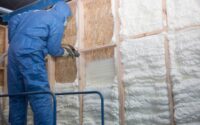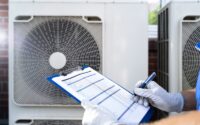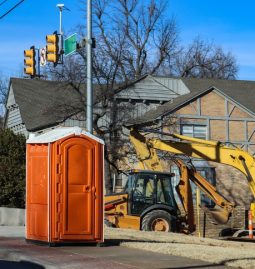Mold: it’s a word that can instantly make homeowners shudder. Mold isn’t just unsightly; it can signify deeper issues in your living space and potentially cause health concerns for you and your family. Understanding the risks and knowing when to seek professional help is crucial in maintaining a safe, healthy home environment.
Early Warning Signs of Mold Infestation
How do you know if you have a mold problem that requires professional attention? Here are some signs:
Visible Signs of Mold Growth
- Discoloration and stains on walls, ceilings, and other surfaces
- Diverse-colored specks or patches that indicate different mold species
- Warping or bulging of structures that mold’s destructive habits can cause
Musty Odors
Often, your nose can detect mold before your eyes do. A persistent musty smell, especially in damp areas, is a red flag for hidden mold infestations.
Water Damage Indicators
Where there’s water damage, mold often follows. Keep an eye out for water stains or areas that feel damp to the touch—as these are prime locations for mold to grow.
The Health Symptoms of Mold Exposure
What does exposure to mold look like for your health? Let’s break down the symptoms.
Respiratory Issues and Mold Sensitivity
- Respiratory conditions such as chronic coughing, wheezing, and difficulty breathing
- Worsening of asthma symptoms or allergic reactions
Skin and Eye Irritation
- Redness, itching, or rashes on the skin
- Irritated, watery, or red eyes that often feel like an allergic reaction
Neurological Symptoms Attributed to Mold
- Frequent headaches or migraines
- Memory loss, dizziness, or issues with concentration
Understanding the Severity of Mold Infestation
Grasping the scope of a mold problem is essential before proceeding with remediation.
Assessing the Extent of Mold Spread
- Extent: Is the mold isolated to a small area, or is it widespread?
- Location: Are we looking at surface mold, or is it infiltrating into wall cavities and air ducts?
Structural Damage by Mold
Deterioration of wood, damage to drywall, and other structural impacts can result from a severe mold infestation. These problems can reduce your home’s integrity and should be addressed immediately.
The Risks of DIY Mold Removal
- Limited effectiveness of home remedies and store-bought solutions
- Potential to spread mold spores instead of eradicating them
Mold Remediation Process: What to Expect
So, what happens when you call in the pros to tackle a mold problem?
Inspection and Mold Assessment
Skilled professionals will survey your home, investigate the type and scope of mold present, and formulate a remediation plan to deal with the issue effectively.
The Mold Remediation Plan
Your mold-removal team will aim to contain the area to prevent further spreading, remove affected materials safely, and thoroughly clean the spaces affected.
Restoration and Prevention Strategies
Post-cleanup, it’s important to repair any damage caused during removal and establish strategies, like mold inhibitors, to prevent recurrence.
Choosing Professional Mold Remediation Services
Selecting the right team is crucial in effectively dealing with mold. Look for:
Criteria for Selecting Mold Remediation Experts
- License, insurance, and certifications specific to mold remediation
- Experience in handling similar mold issues and positive client feedback
Questions to Ask Potential Remediation Services
Be sure to inquire about their process, the tools employed, and how they guarantee the quality of their work.
Water Damage Restoration
In instances where mold is a result of water damage, it’s essential also to discuss water damage restoration services. These experts can help address the root cause, preventing future mold growth.
Property Damage Restoration
If you’re in Texas and dealing with property damage along with mold, services specializing in damage restoration in Fort Worth can provide comprehensive solutions to bring your property back to its pre-damage condition.
Post-Remediation: Ensuring a Mold-Free Environment
After the remediation work is complete, the focus shifts to maintaining a mold-resistant environment.
Maintenance Tips to Prevent Future Mold Growth
- Control Humidity Levels: Keep indoor humidity below 60 percent, using dehumidifiers if necessary, to create an environment less hospitable to mold.
- Enhance Ventilation: Ensure rooms, especially bathrooms and kitchens, have adequate air circulation. Use exhaust fans or open windows when cooking, showering, or using the dishwasher.
- Address Leaks Promptly: Regularly inspect plumbing and fix leaks as soon as they’re discovered to prevent moisture accumulation.
- Properly Seal Windows and Doors: Prevent moisture from seeping into your home through gaps by caulking and weather-stripping windows and doors.
- Regular Cleaning: Mold spores can settle anywhere, so clean and vacuum your home regularly to keep spore counts low.
- Utilize Mold-Resistant Products: When renovating or repairing your home, choose mold-resistant drywall, paints, and other materials.
- Inspect Your Roof and Gutters: Ensure your roof is in good repair and that gutters are clean and draining properly to prevent water damage and eventual mold growth.
- Monitor and Maintain Your HVAC System: Change filters regularly, have routine maintenance, and ensure that air conditioners and ducts are free of mold.
- Dry Wet Areas Immediately: Don’t leave wet clothing in the washing machine; dry spillages quickly, and ensure that wet areas from incidents like floods are promptly and thoroughly dried.
- Landscaping Considerations: Ensure that the ground slopes away from your home’s foundation, minimizing water pooling around the premises.
Regular Inspections and When to Test for Mold
Periodic professional inspections are vital, as is prompt testing whenever there are signs of mold resurfacing.
Conclusion
In recognizing the signs of mold and responding quickly with professional help, you ensure a safe habitat for you and your loved ones. Remember, mold is more than just a spot on your wall; it’s a health hazard that can be effectively managed with the right approach.








